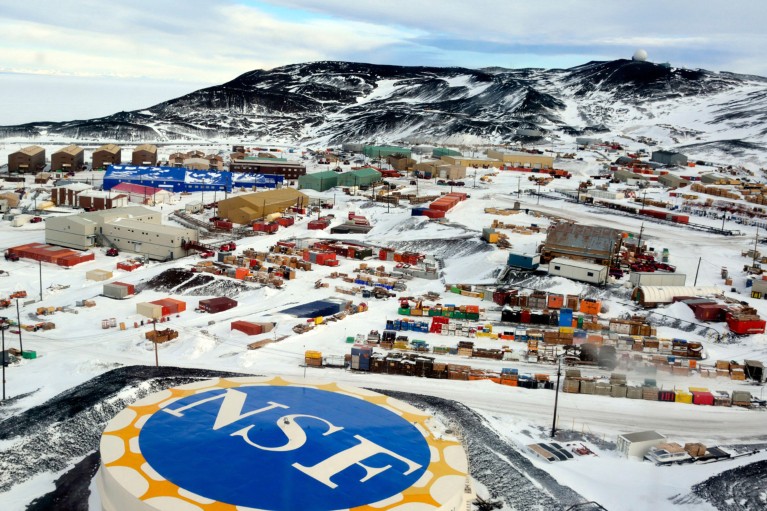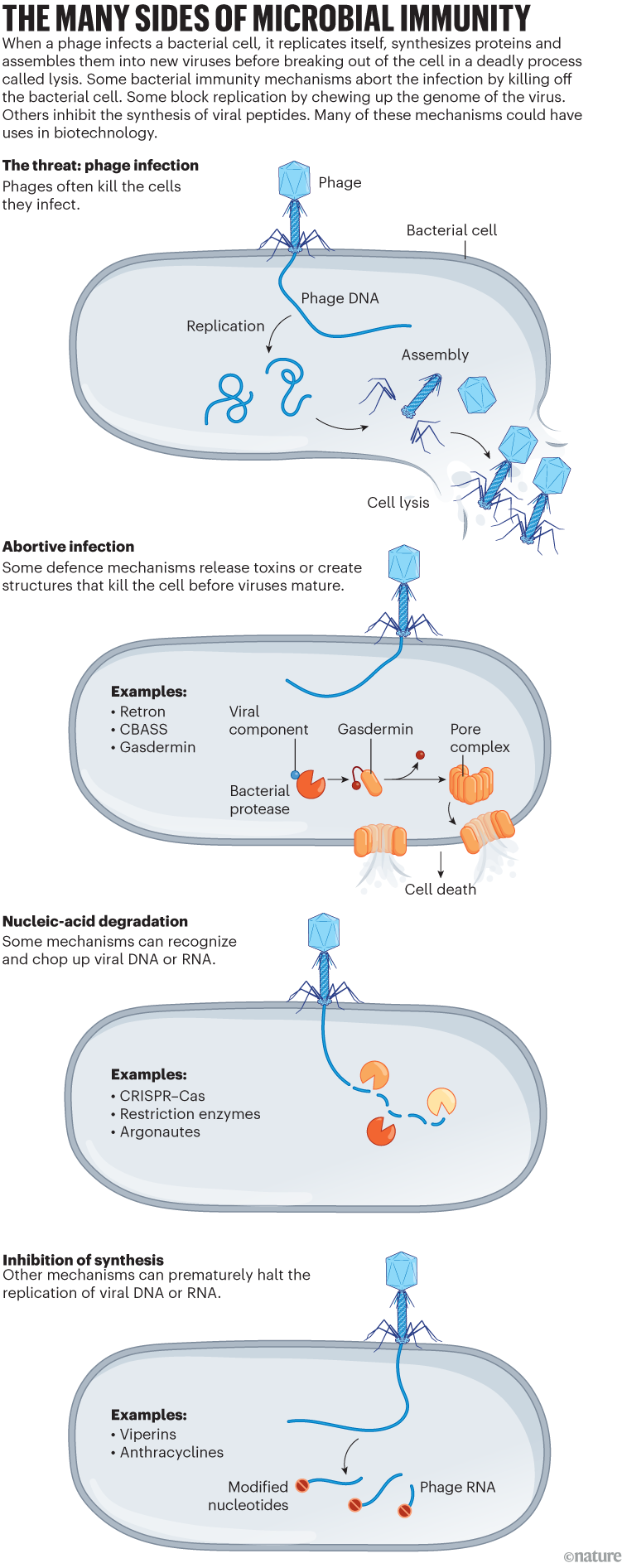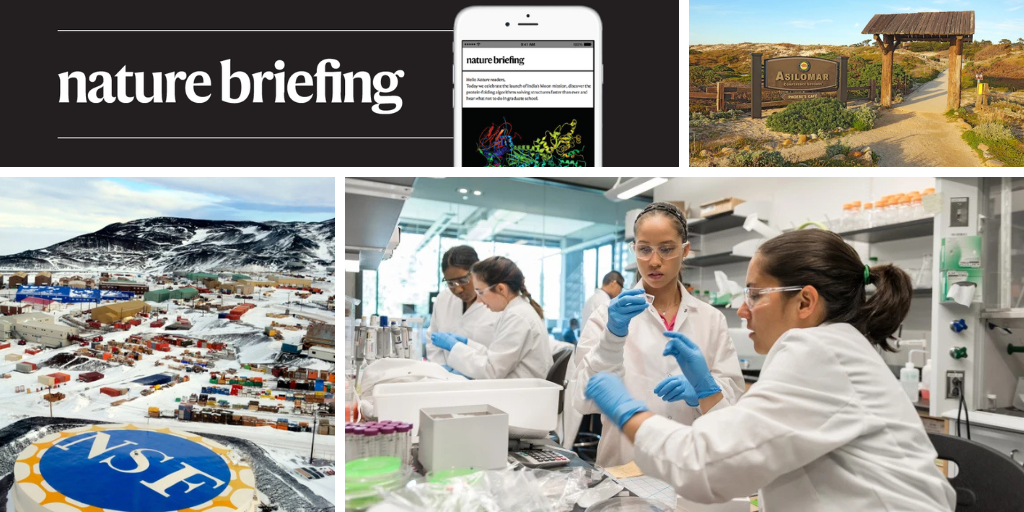You have full access to this article via your institution.
Hello Nature readers, would you like to get this Briefing in your inbox free every day? Sign up here.

McMurdo Station in Antarctica, which is operated by the US National Science Foundation, has been in need of repairs and upgrades for decades.Credit: U.S. National Science Foundation/Associated Press/Alamy
Scientists say that changes under the Trump administration are undermining plans for US research in Antarctica, from penguin surveys to urgent work to understand the continent’s melting ice. The country has three research stations on the icy continent, which deliver groundbreaking scientific insights and a hefty dose of soft power. But the National Science Foundation (NSF), which runs the research there, is facing drastic budget and staff cuts. And the Trump administration has fired and — under court order — rehired several crucial programme officers for Antarctic research.
In another blow to young scientists in the United States, the NSF has announced that it will award only 1,000 of its highly-competitive Graduate Research Fellowship Program (GRFP) awards — half of the usual number. The GRFP helps cover the tuition and living expenses of master’s and PhD science students for five years. This cut is “a heartbreaker”, says biologist Rob Denton. For many applicants, receiving this award “could be the difference between them staying in science or finding another career”.
Tonka bean trees (Dipteryx oleifera) in the Panama rainforest might make themselves into lightning rods to edge out the competition. Using a bespoke system of sensors and cameras, researchers found that tonkas can take a hit from a lightning bolt unscathed, but the strike kills off surrounding competitors and the parasitic vines that grow around the tree’s trunk. Surviving the strikes could result in a 14-fold increase in seed production over the tree’s lifetime, researchers estimate. “There’s a quantifiable, detectable hazard of living next to Dipteryx oleifera,” says forest ecologist and study author Evan Gora.
Reference: New Phytologist paper
Features & opinion
Mitochondria — the supposedly static energy factories that reside inside cells — seem to actually be expert travellers, skipping from one cell to another. This ‘mitochondrial transfer’ has been observed in a wide variety of cells and in organisms as diverse as yeast, molluscs and rodents. Some studies have hinted that cells donate their mitochondria to their neighbours during times of need. Other research suggests that mitochondrial transfer can be a lethal weapon that cancer cells deploy to gain an advantage. But what this means for human health is still a mystery — if it happens inside the human body at all.
“Elected officials will not be compelled to protect scientific institutions if scientists take no steps to defend them,” argues social scientist Fernando Tormos-Aponte, who offers lessons for resistance drawn from environmental and other social movements. His recommendations for US scientists:
• Build diverse coalitions grounded in inclusion and emphasizing bottom-up organizing.
• Use media and activism to apply political pressure where the Trump administration’s policies are hurting even his own supporters.
• Support grassroots groups, especially those directly affected, rather than relying only on large organizations.
• Organize through unions and build connections between science and the labour movement.
In 1975, a pivotal meeting took place at the Asilomar Conference Center in California: the International Congress on Recombinant DNA Molecules, known ever since as the Asilomar conference. The meeting established the basis for rules to ensure that research on genetically modified organisms minimizes risks. Fifty years later, a Nature editorial explores what it might take to move the dial on analogous issues today. Certainly it would take more than a single gathering of some 140 people drawn from high-income countries, says the editorial.
Infographic of the week

Credit: Nik Spencer/Nature
Scientists have identified a slew of immune mechanisms that bacteria and the other prokaryotic form of life on Earth, archaea, use in their ongoing existential struggle with viruses. Researchers are continually monitoring the battlefield in the hopes of uncovering another revolutionary tool like CRISPR–Cas — a bacterial defence system that recognizes and cuts specific sequences in viral genomes — which gives us the power to delete or edit genes with remarkable precision. (Nature | 11 min read)
Coffee comes with a carbon cost, so using less of it is a good thing — especially if it can be done without giving up your daily dose of life-giving brown elixir. Physicists fine-tuned the ‘pour-over’ method (formerly known, at least in my childhood home, as just ‘making coffee’) to use up to 10% fewer beans. They swapped the coffee grounds for silica gel particles, and the paper filter for a glass cone and lasers, to discover the ideal approach: pour really slowly, and from a great height. This creates “avalanche dynamics”, in which the grains swirl for longer, giving you more coffee bang for your bean buck. How high? “Be reasonable,” says study co-author Arnold Mathijssen. You want to maintain laminar flow, so about 50 centimetres will do it.
While I pop the kettle on and warm up my pouring arm, why not send me your feedback on this newsletter? Your e-mails are always welcome at [email protected].
Thanks for reading,
Flora Graham, senior editor, Nature Briefing
With contributions by Jacob Smith
Want more? Sign up to our other free Nature Briefing newsletters:
• Nature Briefing: Careers — insights, advice and award-winning journalism to help you optimize your working life
• Nature Briefing: Microbiology — the most abundant living entities on our planet — microorganisms — and the role they play in health, the environment and food systems
• Nature Briefing: Anthropocene — climate change, biodiversity, sustainability and geoengineering
• Nature Briefing: AI & Robotics — 100% written by humans, of course
• Nature Briefing: Cancer — a weekly newsletter written with cancer researchers in mind
• Nature Briefing: Translational Research — covers biotechnology, drug discovery and pharma


